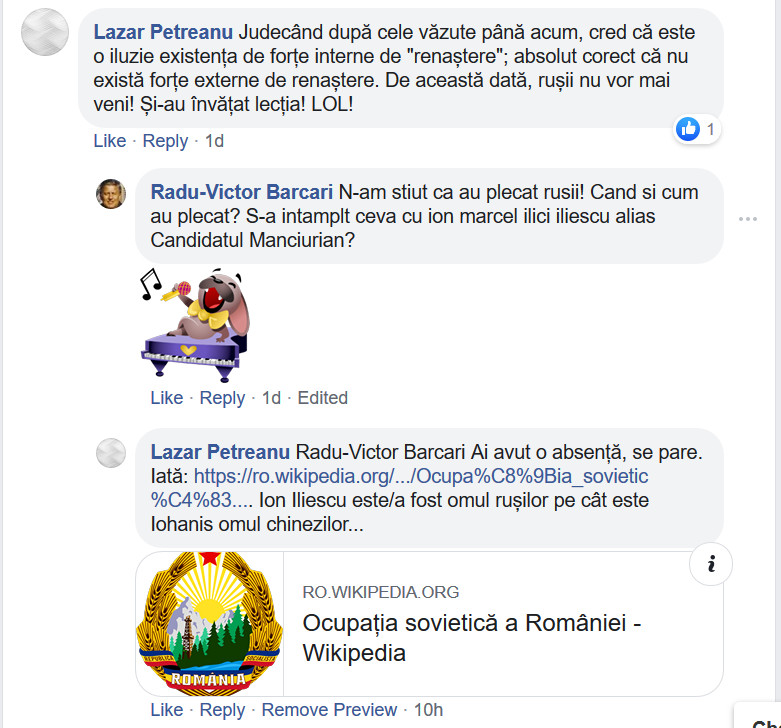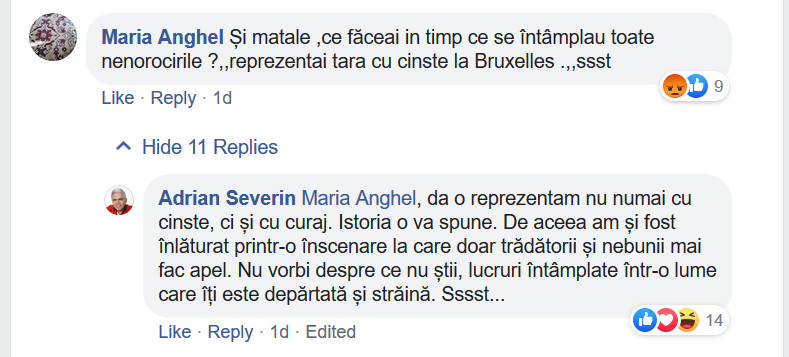Dată fiind atmosfera de “sărbătoare” a Marii Uniri, am scotocit web-ul în căutare de informații. Pe care nu le-am prea găsit, toată propaganda oficială fiind despre “românii cei mai români dintre români”; iar neoficial nu se scrie nimica, dat fiind că românii se bucură în a fi analfabeți (apud D. Cantemir).
Într-un final m-am oprit la o carte scrisă de un american.
UPDATE 04.12.2019: Cartea este destul de corectă. Este un pic înclinată spre admirație exagerată pentru armata română – și români, și un pic zeflemitoare cu rușii – altfel, probabil, nu se publică… dar destul de corectă. Mai ales față de gunoaiele de propagandă scrise pe românește.
Mi-a plăcut formularea:
The majority of the soldiers, infected with the toxin of peace and encouraged by Bolshevik agitators, followed Lenin’s instructions to arrange ad hoc local armistices.
Torrey, Glenn E.. The Romanian Battlefront in World War I (Modern War Studies (Paperback)) (p. 263). University Press of Kansas. Kindle Edition.
Despre tezaur (dar nu despre ceas, sau palton):
Lenin reacted angrily to the Romanian intervention in Bessarabia, breaking off diplomatic relations, confiscating the Romanian treasury held in Moscow, and imprisoning and then expelling the Romanian minister.
Torrey, Glenn E.. The Romanian Battlefront in World War I (Modern War Studies (Paperback)) (p. 275). University Press of Kansas. Kindle Edition.
Pe scurt:
As for the Romanians, the campaign of 1916 cost them 250,000 casualties, placed two-thirds of their country under a harsh occupation regime, and depressed the morale of soldiers and civilians to the point that some doubted that the war should be continued. Fortunately, the shield provided by the Russian army and the strategic priorities of the Central Powers elsewhere provided the Romanians with a reprieve of six months in which to regroup and rebuild their shattered army. At the base of the resurrection of this army—certainly the most remarkable of the entire war—was, of course, Romanian self-effort. Also essential were the supply of abundant military equipment by the Entente and the mentoring of General Berthelot’s mission. Not all of its faults had been corrected, but in contrast to the mismatch of 1916, the Romanian army of 1917 was able to stand on virtually equal ground with its opponents in most military categories. The acquisition of new weapons and new skills elevated morale, as did the confidence imparted by Berthelot and his men. Their presence among the Romanians, fighting for them and in some cases dying with them on the field of battle, was a vivid demonstration that Romania was supported by powerful allies in the west.
Torrey, Glenn E.. The Romanian Battlefront in World War I (Modern War Studies (Paperback)) (p. 332). University Press of Kansas. Kindle Edition.
[…]
The Greater Romania that emerged from the First World War was almost exactly twice the size of the prewar Old Kingdom, both in territory and in population. But this growth left the nation with dissatisfied minorities and hostile, irredentist neighbors. The Soviet Union, Bulgaria, and Hungary would take their revenge during the summer of 1940. Under successive threats from these nations, who had the approbation or acquiescence of Nazi Germany, Romania surrendered Bessarabia, Northern Bukovina, Southern Dobrogea, and a large wedge of Transylvania. These losses totaled one-third of its interwar territory and population.6 Only Transylvania was restored after World War II. Nevertheless, contemporary Romania remains a reasonable fulfillment of the vision of a Greater Romania for which the nation went to war in 1916.
Torrey, Glenn E.. The Romanian Battlefront in World War I (Modern War Studies (Paperback)) (p. 334). University Press of Kansas. Kindle Edition.
Este o continuare a lui 1848, și 1959; a războiului Crimeei; este continuarea construcției unei himere, cu singura rațiune de a fi – anti-rusismul. Este istoria Ucrainei de limbă latină.
/UPDATE
Și uite așa, căutând una, găsesc alta: ATR despre dușmănia veșnică dintre români și ruși. (memorare) Mi s-a părut excentric, așa că l-am pus la bookmarks.
Iacă și facebucă:



Răspunsul la ultima întrebare încă îl așteptăm…
Aș zice QED. Dar, cine știe?!
